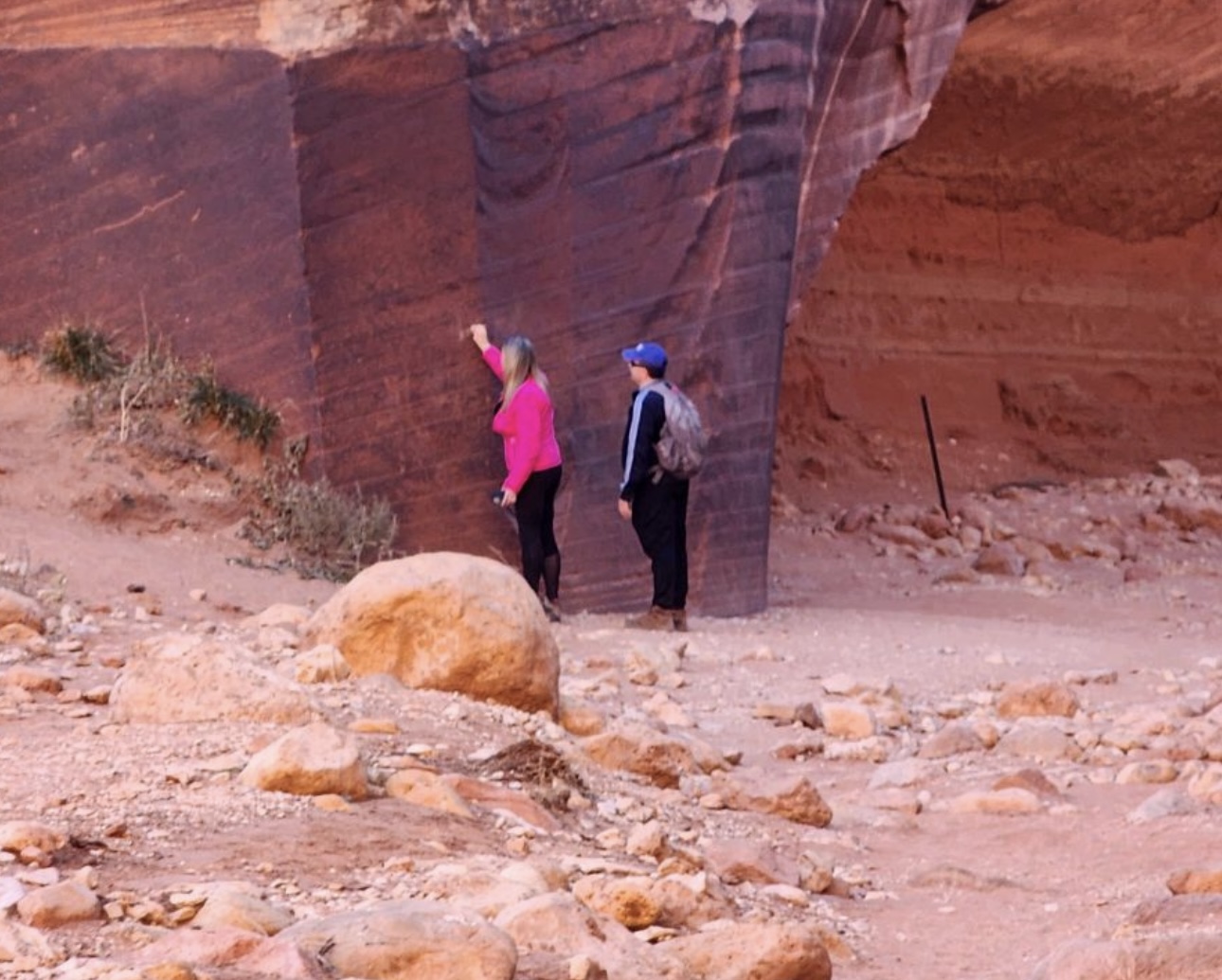Some information may be outdated.
Happy Earth Day! Moab City elected officials and staff continue ongoing efforts to improve sustainability and environmental quality and health in the Moab Valley. With the hire of Mila Dunbar-Irwin as the new sustainability director, the city is poised to advance some of those efforts. At a March 11 strategic planning meeting, the city council discussed water conservation and sustainability goals.
Water Conservation
Ongoing studies of the aquifers and watersheds that provide Moab residents with water for drinking, home and commercial use, and irrigation continue to leave doubt about how much water we can safely draw from the aquifer without depleting our stores. Continuing growth and development also leave community leaders in doubt about how much and how fast water demand will increase.
Assistant City Manager Carly Castle has been taking on many of the city’s sustainability projects and concerns in the interim between the departure of the last sustainability director and the hire of Dunbar-Irwin. At the March 11 strategic planning meeting, Castle and City Engineer Chuck Williams discussed the outlook for water and what kind of steps the city should consider for water management.
Water conservation policies, such as “time-of-day” use ordinances, greywater systems, and landscape ordinances were discussed. Water regulations associated with new developments could be another strategy to control water use and possibly to reign in growth—for example, some municipalities require developers to bring their own water rights for their projects.
Williams outlined some potential sources of additional water for the city, should the draw on the Glen Canyon aquifer, which provides city drinking water, become too great. Another aquifer, called the Valley Fill aquifer, already provides some users with water; though it needs more treatment than the Glen Canyon aquifer, it could provide more water. Consolidating private wells into the public system, capturing overflow from springs at high-flow times, and partnering with other water supply agencies could improve efficiency and save water as well.
All council members agreed, however, that it would be vastly preferable to avoid drawing down the aquifer and needing to develop alternative water sources. Williams encouraged the council to be proactive in planning for water use in the valley.
“We’re not just water system providers, we’re water resource managers,” he said.
Energy
Castle reported that all city power meters are now on Rocky Mountain Power’s BlueSky program, which allows customers to support renewable energy by purchasing renewable “blocks” at a fixed price.
The city also recently had a greenhouse gas inventory conducted which estimated various kinds of emissions from electricity use, transportation, and commercial and municipal sources.
Recently passed standards on new overnight accommodations developments included requirements that new projects produce some percentage of their own power on site. The original standard put that percentage at 80, but it’s not clear if that standard is practical.
Setting priorities
Councilmembers gave city staff their top priorities for the new sustainability director to take on.
One of Commissioner Mike Duncan’s priorities is that more independent scientific research is done on questions like how much water is available and where it’s being used, and what is a realistic percentage of an overnight accommodations development’s power use for the city to require to be produced onsite. Duncan also wants to learn more about single-stream versus sorted recycling.
“I’d like to find out if that stuff that we’re recycling will actually find a recyclable home,” he said.
Mayor Emily Niehaus said she’d like to see the city start to shift its vision of sustainability from choosing the “least bad” system to creating systems that are regenerative. She proposed the idea of a voluntary carbon off-set fund, into which visitors could donate an amount that offset the impact of their traveling to Moab. The funds would be used to buy and plant trees.
Councilmember Karen Guzman-Newton listed transportation as one of her priorities, expressing a hope that the city can promote active transportation and eventually offer a public shuttle system to reduce noise, traffic, and pollution associated with cars.
All council members and staff agreed that they would like to see sustainability “baked in” to the mission of all city departments, rather than a concern only of the sustainability department.
Castle also noted staff are dedicated to getting the city into compliance with Dark Sky Community standards.
Appreciate the coverage? Help keep local news alive.
Chip in to support the Moab Sun News.




